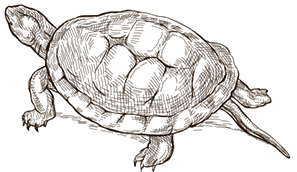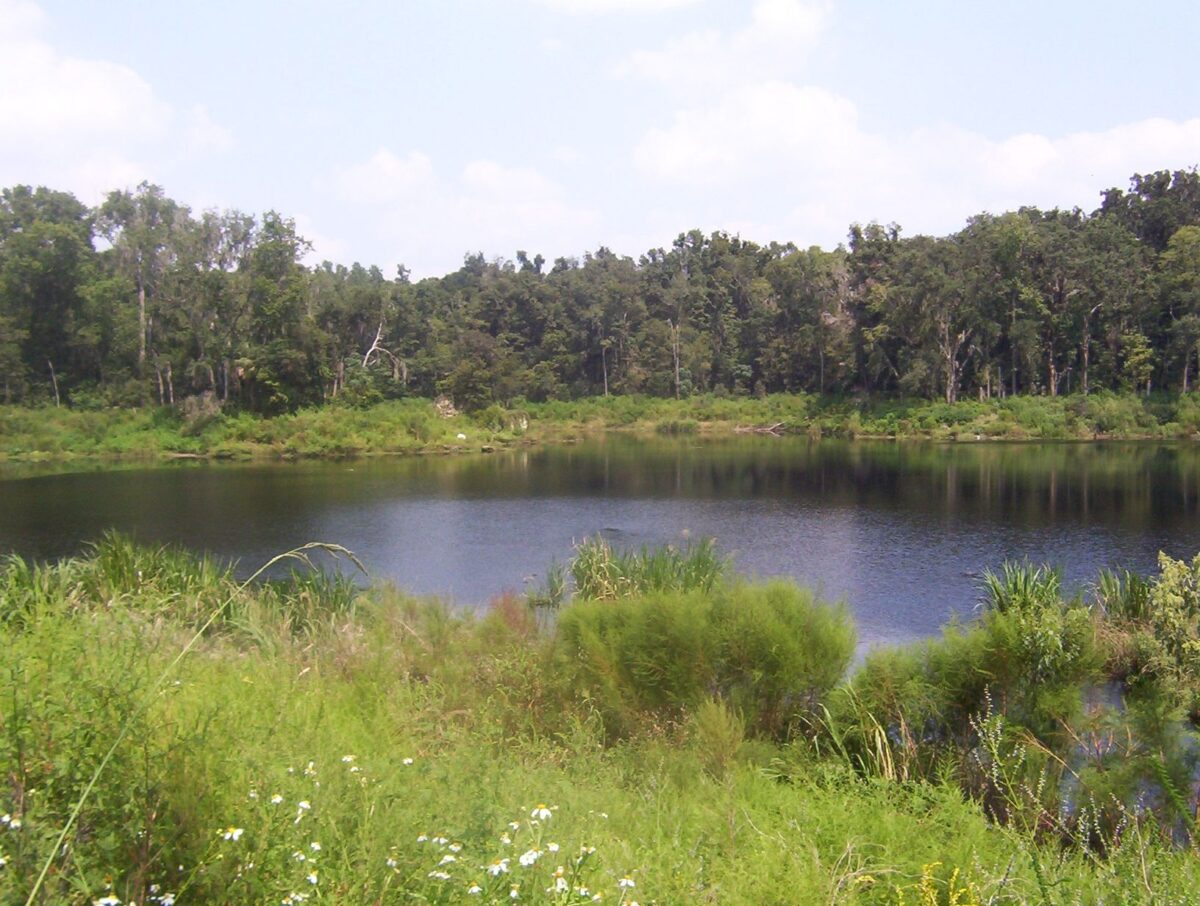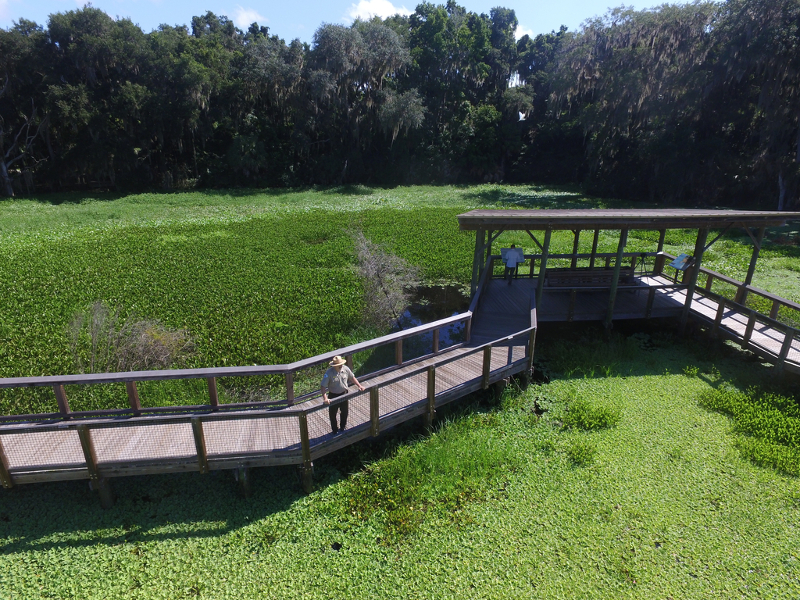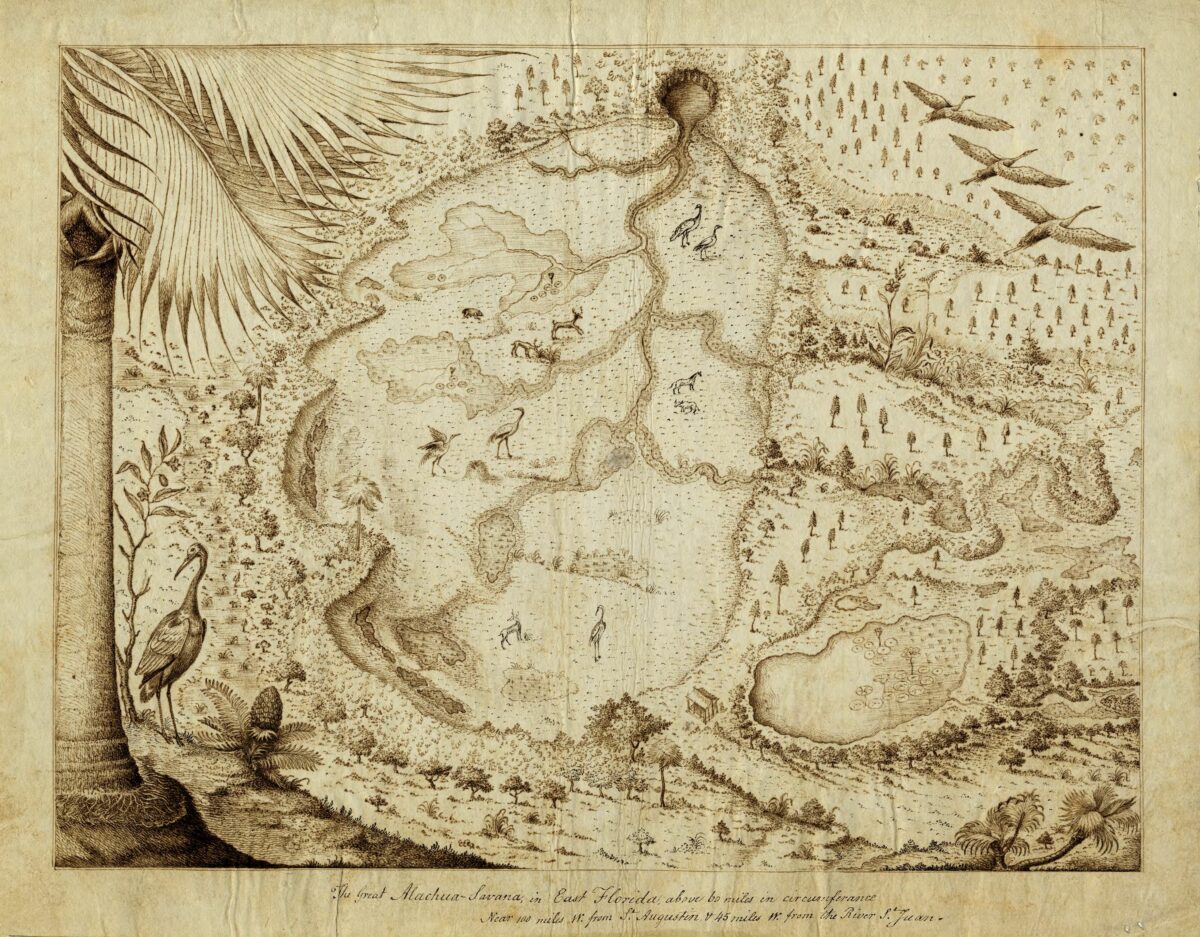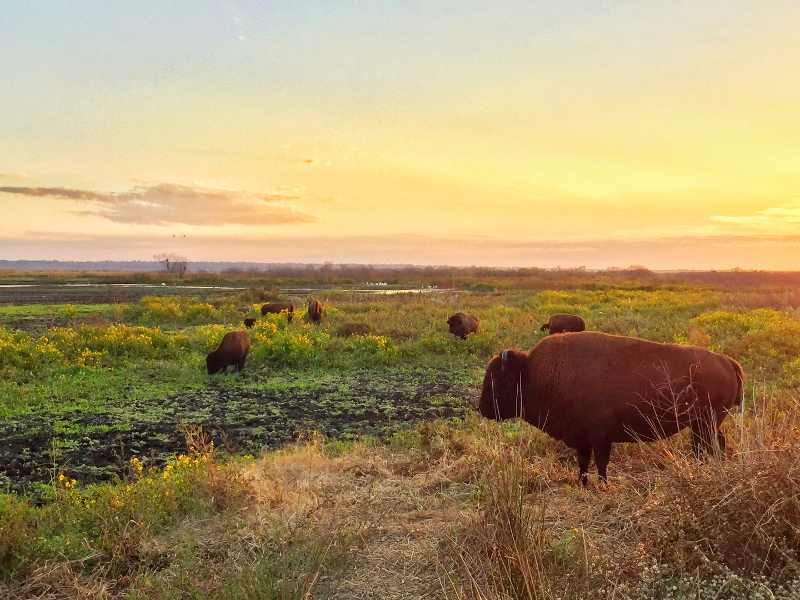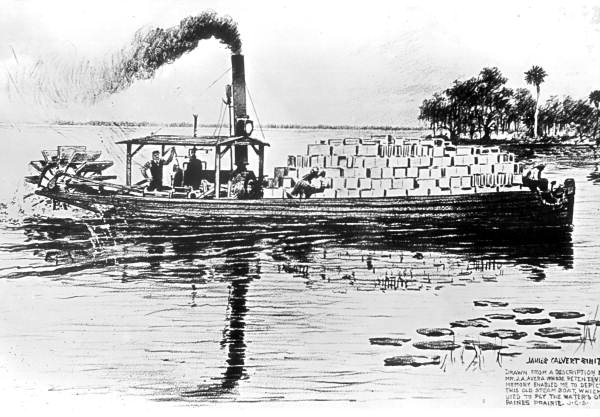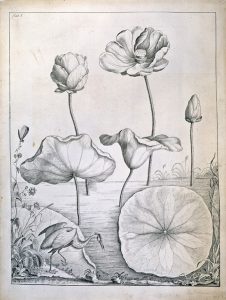Alachua Sink
Back
to
Map
Overview
Alachua Sink is located in Paynes Prairie State Park. The sink is the deepest of Paynes Prairie’s sinkholes and acts as a conduit for water entering the Floridan Aquifer from the prairie and creeks that drain to the area such as Sweetwater Branch and Tumblin Creek. The name of the sink was likely derived from the Potano word meaning “jug”. The sink can drain at a rate of up to six million gallons per day! When water levels are high, or if the sink becomes clogged, Alachua Sink can transform the prairie into a lake.
Water Quality
Alachua Sink is considered impaired for excessive levels of nitrogen by the Florida Department of Environmental Protection. In response to the impairment, the City of Gainesville, Gainesville Regional Utilities and partners completed a major restoration project to protect the quality of water flowing into the Floridan Aquifer from Alachua Sink. The result is the Sweetwater Wetlands Park, which consists of more than 125 acres of wetlands and ponds. The park was created to improve the water quality of wetlands in Paynes Prairie and the Floridan Aquifer. Water quality monitoring information is available for Alachua Sink. To access this data, please visit here and access the monitoring stations and data by clicking on the station on the interactive map.
Plan a Visit
You can visit Alachua Sink by taking an adventure on the La Chua Trail located in Paynes Prairie State Park.
Fun Facts
- In the 1770’s, the naturalist William Bartram documented his travels through Paynes Prairie and described the Alachua Sink: “…a spacious meadow, embellished with a little lake, one verge of which was not very distant from us; its shore is a moderately high, circular bank, partly encircling a cove of the pond, in the form of a half moon; the water is clear and deep, and at the distance of some hundred yards, was a large floating field (if I may so express myself) of the Nymphea nilumbo, with their golden blossoms waving to and fro on their lofty stems. Beyond these fields of Nymphea were spacious plains, encompassed by dark groves, opening to extensive Pine forests, other plains still appearing beyond them.”
- In the 1870’s the sink was clogged and the prairie transformed into a large lake. The area around the sink served as a landing site for steamboats. From here, cargo was loaded onto the Florida Southern Railway (now the rail trail).
- Especially in times of drought, the sink becomes a gathering place for a large number of alligators.
Click the Image to See the Gallery!
